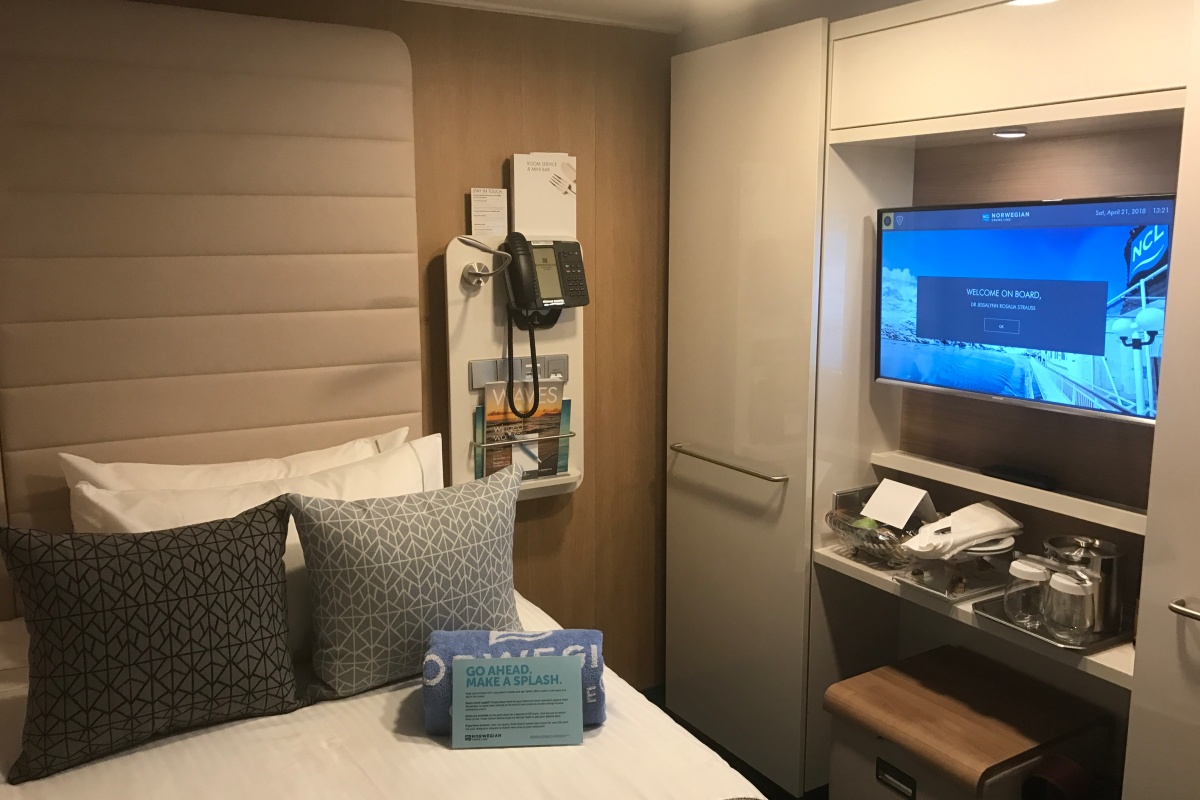I’ve been extremely lucky to put my career as a college professor on hold for a year while I get started as a travel agent and do some (pretty fun) research about all sorts of cruise experiences. One thing I’ve learned is that I’m a pretty big fan of cruising solo.
I’m certainly not the only one who likes cruising alone – you can read plenty of blog posts about how to make the most of your solo cruise, including specific tips for solo cruisers on Royal Caribbean and Norwegian Cruise Lines. (Both of these lines offer solo cabins for cruisers, such as the studio cabin I had on my Norwegian Bliss transatlantic cruise, which you can see in the picture at the top of this post.)
What I wanted to talk about today is the thing we don’t like to talk about, especially if we like to travel a lot: Money.
I think it helps a lot to think about the business of cruising, something I allude to in my post about finding deals on last-minute cruises. The cruise industry has built itself around the premise of double occupancy – that is, that each 2-person cabin will be occupied by two people.
Sometimes, of course, a cabin will be occupied by more than two people: When a family brings kids, for instance, or when more budget-conscious cruisers decide to put three or four people in a room to cut down on costs. Often, though, you’ll find that third and fourth passengers are heavily discounted or even free – this becomes cost-effective for the cruisers, but not really too great for the cruise company’s bottom line.
It’s easy to compare a cruise ship cabin to a hotel room: We don’t pay any differently to have one or two people stay in a hotel. But of course, the costs to the company of a cruise ship passenger extend much farther than the costs of a hotel room occupant (food, staff in the kids clubs, extra use of resources like toilet paper, etc). The cruise line is willing to discount third and fourth passengers because often they’re kids, and frankly, no one is probably going to pay full price to jam four people into a 180-sq-ft cabin no matter how great the cruise is.
But here’s where things get tricky: When a cruise ship cabin is occupied by only one person, instead of two, the problem isn’t that the cruise company uses additional resources. It’s that the company doesn’t recoup its expected costs, which it plans to use to pay staff like waiters and stewards and do all of the other things it needs to do to run the cruise, because it only has one paying customer in the cabin, not two.
Because of this, many cruise lines will charge what’s often known as a “single supplement” or “solo supplement” to account for the expected fare that’s not being paid by a second passenger. In truth, I think this is a bad way to look at it: Really, you’re just paying for a second person, even though that person isn’t actually there. (You do pay the fare, but not the taxes and port fees, which is why cruising single is often roughly double the cost of cruising with someone else.)
As a solo cruiser myself, I’d love it if the cruise lines would change their policies to be more in line with the hotel industry, but I understand why it’s not possible. So in the next post, I’ll look at what you can do to book a solo cruise that’s affordable and realistic.
Interested in booking a solo cruise? See more on my website or click here to contact me for more information.
